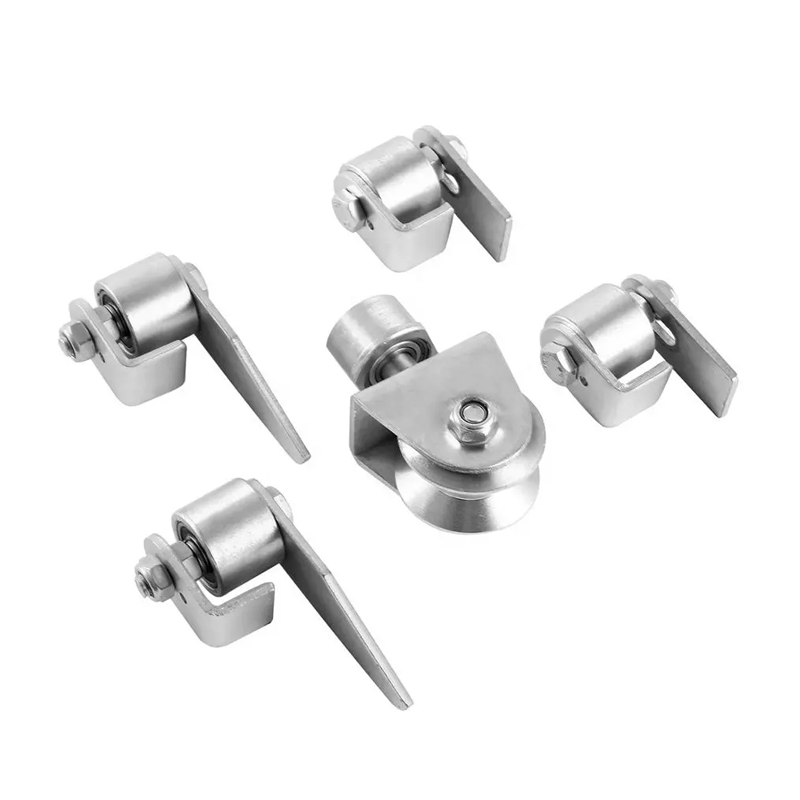No. 200 Gaoxin RD, Shanghua St, Lanxi, Zhejiang, P. R China
The Surface Heat Treatment Rack Pinion Gear is a precision-engineered ...
See DetailsV groove sliding gate wheels are an essential component in many sliding gate systems, especially where reliable and smooth movement is critical. These wheels, characterized by their distinctive V-shaped groove around the circumference, are designed to run along a corresponding track or rail, ensuring the gate's stable and guided motion. Their design and material choices provide several advantages that make them well-suited for both residential and industrial gate applications.

One of the primary benefits of V groove sliding gate wheels is their ability to maintain precise alignment along the gate track. The V-shaped groove fits securely onto the rail,lateral movement and reducing the risk of derailment. This tight fit allows the gate to operate smoothly even under varying loads and environmental conditions, providing consistent performance over time.
Material selection plays a key role in the performance of these wheels. Typically made from hardened steel, stainless steel, or sometimes nylon-coated steel, V groove wheels combine strength with durability. Hardened steel wheels resist deformation and wear under heavy loads, making them suitable for industrial gates or heavy residential gates. Stainless steel wheels offer corrosion resistance, which is especially important in outdoor or coastal environments where moisture and salt can accelerate deterioration.
Another advantage of V groove sliding gate wheels is their relatively low maintenance requirements. The groove design helps to channel debris away from the contact surfaces, reducing the risk of obstruction and friction. Additionally, many V groove wheels incorporate sealed bearings, which protect internal components from dirt and moisture, extending service life and reducing the frequency of lubrication or repairs.
Heavy duty fence gate wheels are critical for ensuring that large, often heavy gates can open and close smoothly and safely. Proper installation and adjustment of these wheels are essential to achieving reliable performance and prolonging the lifespan of both the wheels and the gate structure.
The installation process begins with selecting wheels that match the gate's weight and size specifications. Heavy duty wheels typically feature robust materials such as cast steel or polyurethane-coated steel with integrated bearings to handle significant loads and frequent use. It is important to confirm that the mounting brackets and fasteners are compatible and rated for the intended application.
When installing heavy duty fence gate wheels, it is crucial to start with a level and well-prepared track or surface. Any irregularities in the track can cause uneven wheel wear, increased friction, and potential gate misalignment. Ensuring that the track is clean, free of debris, and properly secured to the ground provides a stable path for the wheels.
After mounting the wheels, alignment correction is a vital step. The wheels must be adjusted so that the gate moves smoothly without binding or wobbling. This involves fine-tuning the height and lateral positioning of the wheels relative to the track. Misalignment can cause excessive wear on the wheel tread and bearings and place undue stress on the gate frame.
Regular inspection during and after installation is recommended to identify any potential issues early. Checking for smooth rotation, secure fastening, and the absence of unusual noises or vibrations helps ensure that the wheels function.
Maintenance considerations include periodic cleaning of the track, lubrication of bearings where applicable, and rechecking wheel alignment. Heavy duty fence gate wheels are designed for durability, but even the strongest components benefit from routine care to prevent premature failure.
In summary, the correct installation and adjustment of heavy duty fence gate wheels involve careful preparation of the mounting surface, selection of appropriate wheels, and precise alignment. Following these steps supports the gate's smooth operation and extends the service life of its components, reducing maintenance costs and operational interruptions.